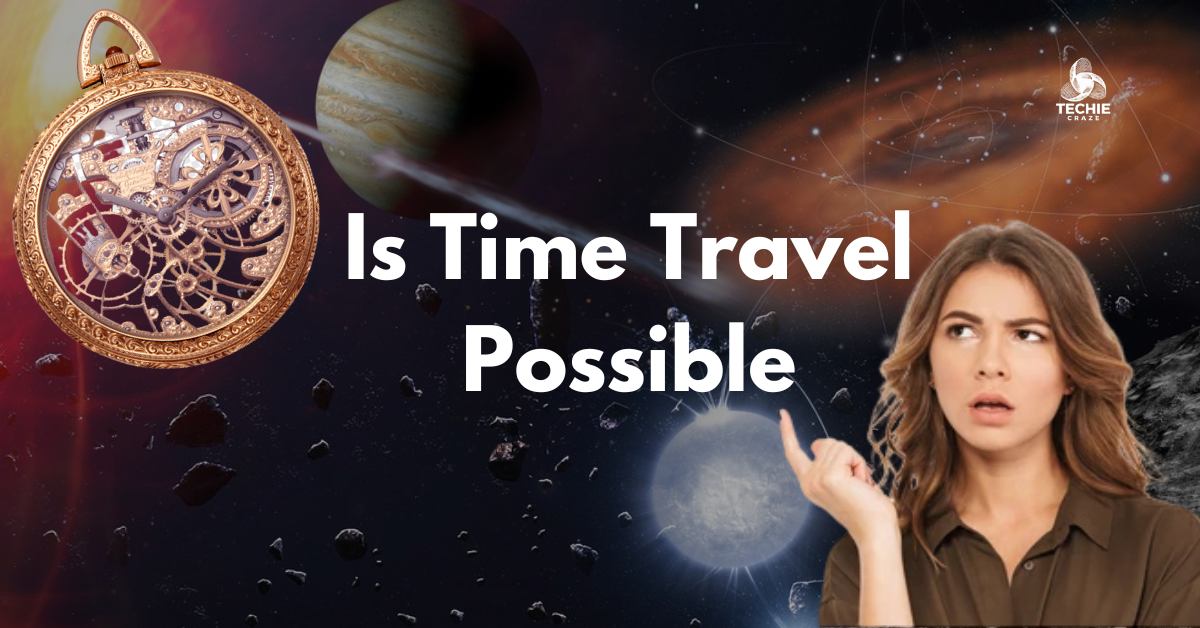The capacity to move through time, either forward or backward, is known as time travel. It is a generally accepted idea in philosophy and literature, especially science fiction. Time travel is frequently accomplished in fiction using a fictitious tool called a time machine. H. G. Wells’ 1895 book The Time Machine popularized the time machine concept.
Are you doing college research and want to know whether time travel is possible? After reading the whole article, you can get the answer to whether it is possible or not. All the information in this article is based on facts and figures. All the data in this article is authentic and accurate.
Backward and forward time travel are the two basic categories of time travel. The capacity to go into the future is known as forward time travel. The theory of relativity suggests that this is potentially feasible. Time will go more slowly for you than for someone moving at a slower rate if you are moving near the speed of light. This implies that you could just travel for a very long time at a high pace into the future.
Scientific Understanding Of Time
The scientific understanding of time is a complex and evolving topic. Physicists typically define time as the flow of events from the past into the present and the future. We can quantify time’s passage even though we cannot see, touch, or taste it. Time can be measured in two different ways: dynamically and atomically. Dynamic timekeeping bases its time measurement on the motion of celestial bodies, such as the Earth. On the other hand, atomic timekeeping counts the vibrations of atoms to measure time.
Another crucial part of scientific knowledge is the idea of the arrow of time. The second law of thermodynamics states that time exhibits an irreversible flow that is frequently correlated with increased entropy. Time asymmetries significantly affect how we perceive causality and how systems behave.
Relationship Between Science and Time
Science and time are two closely related concepts. It is the study of the natural world, and time is one of the fundamental aspects of the natural world. Science seeks to understand how the universe works, and time is essential. One of the ways that science helps us understand time is by developing theories about how time works. For example, Albert Einstein’s theory of relativity.
Overall, the relationship between science and time is complex and multifaceted. Science helps us understand, measure, and use time wisely. As our understanding of science continues to evolve, we will learn more about the nature of time and how it affects our world.
Einstein’s Theory Of General Relativity
According to Albert Einstein’s theory of general relativity, gravity is a curvature of spacetime brought on by mass and energy. The theory was developed between 1907 and 1915. In general relativity, spacetime is a four-dimensional continuum consisting of three spatial and one temporal dimension. The presence of mass and energy causes the curvature of spacetime. An object bends spacetime more visibly the more mass and energy it has.
According to this Theory, time dilation occurs when an object travels at extremely high speeds or experiences intense gravitational fields. Experimentally, this effect has been seen and confirmed. For instance, astronauts in space experience slightly slower time than those on Earth due to their relative motion and weaker gravitational field. While time dilation allows for differences over time, it does not provide a way to travel to specific points in the past or future.
What Is a Warm Hole
A wormhole is a theoretical concept in theoretical physics that suggests the existence of tunnels or bridges connecting different regions of spacetime. It is a hypothetical shortcut that could link two distant locations or even different points in time. The concept of a wormhole emerged from Einstein’s theory of general relativity.
According to general relativity, the presence of mass and energy affects the curvature of spacetime. A wormhole is conceptualized as a distortion or bending of spacetime that forms a structure like a tube connecting two distinct areas. Frequently, this structure is shown as a “throat” that connects two “mouths” or holes.
Conclusion
Ultimately, I hope your main question about whether time travel is possible is now straightforward. No scientific evidence or consensus supports the possibility of time travel. While time travel has been a captivating concept in science fiction, its feasibility remains speculative and hypothetical in science.
The scientific understanding of time, based on theories such as Einstein’s theory of relativity, provides insights into the relationship between time, space, and the behaviour of objects in the universe. However, these theories do not offer practical methods for travelling to specific points in the past or future.
You May also read: How Does Cloud Computing Work.
FAQs
Light travels at a speed of 299 792 458 m/s.
Nobody has invented the time machine.
If we travel at the speed of light, we can travel into the future.
